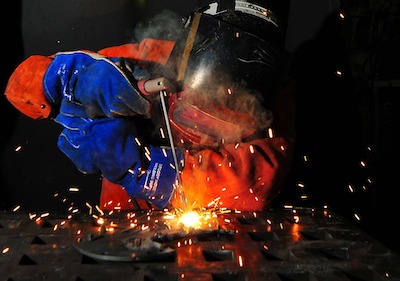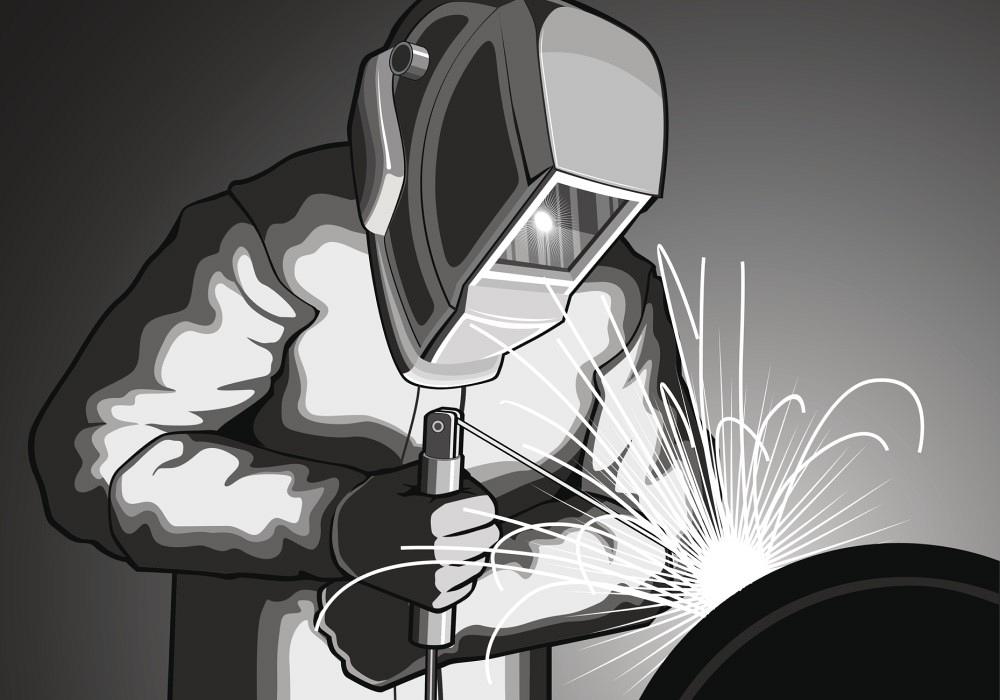Typical Welding Fixing Issues and How to Address Them Effectively
Welding fixings frequently come across a series of issues that can threaten the honesty of the final product. Typical troubles include inadequate infiltration, porosity, and imbalance, to name a few. Each defect presents distinct obstacles that require specific techniques for resolution. Comprehending these issues is necessary for welders aiming to boost their results and skills. This discussion will discover these typical welding repair issues and efficient approaches to address them.
Insufficient Infiltration
Inadequate infiltration takes place when the weld metal falls short to completely fuse with the base product, causing weak joints and possible structural failings. This concern often stems from insufficient warm input, inaccurate electrode angle, or incorrect welding speed. Welders may experience insufficient infiltration because of a miscalculation of the necessary criteria for a specific product density or type. Furthermore, contamination on the base product's surface can prevent efficient bonding, exacerbating the problem. To attend to inadequate penetration, welders need to guarantee suitable setups on their equipment and preserve a tidy work surface area. Normal assessment of welds is suggested to determine any deficiencies early, enabling timely improvements and the avoidance of compromised structural integrity in welded settings up.
Porosity
Porosity is a typical defect in welded joints that materializes as small gas bubbles caught within the weld steel. This problem can compromise the stability of the weld, bring about lowered stamina and potential failing under stress. Belgrade Fabrication. Porosity generally emerges from contamination, wetness, or improper welding methods, which enable gases to escape right into the liquified weld swimming pool. To address porosity, welders should ensure appropriate surface preparation, keep a clean workplace, and make use of suitable welding parameters. In addition, selecting the ideal filler material and protecting gas can mitigate gas entrapment. Routine evaluation and testing of welds can help determine porosity early, guaranteeing prompt rehabilitative actions are taken, consequently protecting the high quality and reliability of the welded structure
Imbalance
Imbalance in welding can develop from numerous factors, consisting of improper arrangement and thermal growth. Comprehending the origin is crucial for effective resolution. Several correction strategies are readily available to straighten components and assure architectural stability.
Causes of Imbalance
Welding misalignment commonly comes from a variety of underlying problems that can endanger architectural integrity. One main cause is inappropriate fit-up of elements prior to welding, which can bring about spaces and irregular surfaces. Variations in thermal development throughout the welding procedure can also cause distortion, specifically if the products being signed up with have different coefficients of expansion. Additionally, insufficient clamping and fixturing may stop working to hold components securely in area, causing activity throughout welding. Poorly kept devices, consisting of welding makers and tools, might introduce disparities in the weld bead, additional adding to misalignment. Operator error, stemming from insufficient training or experience, can additionally play a considerable duty in developing misaligned welds.

Adjustment Techniques Offered
Attending to imbalance effectively calls for a combination of restorative techniques tailored to the specific issues available. One typical method is the usage of components or jigs to hold elements in the proper setting during welding, making certain consistent positioning. Additionally, preheating the products can assist decrease distortion and enhance fit-up. For considerable misalignment, mechanical realignment methods, such as using hydraulic jacks or clamps, can be used to remedy the setting before welding. Post-weld warmth therapy might additionally be essential to soothe stress and anxieties triggered by imbalance. Cautious assessment and adjustment throughout the setup stage can stop imbalance concerns from becoming considerable troubles, advertising a smoother welding process and improving general architectural honesty.
Distortion
Distortion is an usual obstacle in welding that can occur from various elements, consisting of unequal cooling and heating. Understanding the root causes of distortion is important for implementing effective avoidance strategies. Resolving this problem not just enhances structural honesty however additionally improves the general high quality of the weld.
Root causes of Distortion
When subjected to the extreme warmth of welding, materials usually undertake modifications that can cause distortion. This phenomenon largely arises from thermal expansion and tightening throughout the welding process. As the weld area heats up, the product expands; upon air conditioning, it contracts, which can develop internal stresses. Additionally, uneven home heating across a work surface can exacerbate these tensions, causing bending or bending. The kind of product also plays a significant function; steels with varying thermal conductivity and coefficients of development might react differently, bring about unpredictable distortions. Inadequate joint style and inadequate fixturing can add to misalignment during welding, boosting the possibility of distortion. Understanding these causes is essential for efficient welding fixing and avoidance methods.
Prevention Techniques
Reliable avoidance methods for distortion during welding concentrate on managing heat input and ensuring appropriate joint design. Preserving a regular warmth input helps to lessen thermal expansion and tightening, which can cause distortion. Making use of strategies such as pre-heating the workpiece can additionally reduce the temperature gradient, advertising consistent heating. In addition, choosing suitable joint layouts, such as T-joints or lap joints, can enhance security and lower stress and anxiety focus. Applying proper fixturing to safeguard the work surfaces in position additionally help in preserving placement throughout the welding process. Staggered welding sequences can disperse heat extra evenly, protecting against localized welding and metal fabrication distortion. By applying these strategies, welders can considerably lower the chance of distortion and enhance the total high quality of their welds.
Breaking
Cracking is a typical problem come across in welding fixings, typically arising from numerous factors such as incorrect air conditioning prices, product option, or inadequate joint prep work. The occurrence of cracks can greatly jeopardize the integrity of the weld, leading to possible failures throughout operation. To resolve this problem, welders need to first assess the source, making sure that materials are compatible and suitably selected for the certain application. Additionally, regulating the cooling price during the welding procedure is important; fast cooling can induce stress and anxiety and result in breaking. Correct joint design and prep work additionally add to reducing the risk. Applying these techniques can improve weld top quality and toughness, ultimately reducing the chance of fracturing in completed weldments.

Insufficient Combination
A substantial concern in welding repair services is incomplete blend, which takes place when the weld steel does not effectively bond with you could try this out the base product or previous weld passes - Fabrication. This flaw can cause weak points in the joint, possibly endangering the stability of the welded framework. Aspects adding to insufficient blend include inadequate warmth input, incorrect welding technique, and contamination of the surface areas being joined. To resolve this concern efficiently, welders should ensure correct pre-weld cleaning and surface preparation, in addition to change their welding specifications to achieve adequate penetration and combination. Regular examination during the welding process can likewise assist identify insufficient blend early, permitting prompt corrective procedures to boost the overall high quality of the weld
Overheating
While welding repairs can improve architectural integrity, overheating presents a substantial challenge that can cause material degradation. Extreme warm during welding can change the mechanical residential properties of metals, causing minimized stamina, boosted brittleness, and warping. This sensation is specifically crucial in high-stress applications where structural dependability is vital. Identifying getting too hot can include visual evaluations for discoloration or distortion, in addition to monitoring temperature level during the welding process. To alleviate the threats related to getting too hot, welders need to employ proper methods, such as regulating warm input, adjusting traveling speed, and utilizing suitable filler products. Furthermore, implementing pre- and post-weld heat therapies can aid restore product residential or commercial properties and improve the general high quality of the repair work, guaranteeing lasting performance and safety and security.
Frequently Asked Questions
What Are the Usual Indicators of a Welding Flaw?

Exactly How Can I Check My Welds for Top quality?
To test welds for high quality, one can use aesthetic examinations, ultrasonic screening, and radiographic methods. Each method ensures architectural stability, identifies issues, and confirms adherence to defined requirements, ultimately boosting the integrity of the welded joints.
What Safety and security Preventative Measures Should I Take While Welding?
When welding, one ought to prioritize safety and security by using ideal personal safety devices, guaranteeing proper air flow, protecting flammable materials away, keeping a clean workspace, and being mindful of environments to stop injuries and mishaps.
Can I Fix a Weld Without Redoing the Entire Joint?
Repairing a weld without renovating the entire joint is possible, depending on the damages (Fabrication). Techniques such as grinding, including filler material, or using a welding process can successfully deal with certain defects while maintaining the surrounding structure
What Tools Are Necessary for Reliable Welding Repair Works?
Important devices for effective welding repair services include a welding machine, cable brush, mill, protective equipment, clamps, and filler products. Each device plays an essential function in guaranteeing top quality and safety and security throughout the fixing process. Porosity normally arises from contamination, moisture, or incorrect welding techniques, which permit gases to get away right into the molten weld pool. Improperly maintained devices, consisting of welding machines and tools, may introduce variances in the weld bead, more adding to misalignment. When subjected to the intense heat of welding, materials frequently undergo modifications that can lead to distortion. Cracking is a common problem encountered in welding repairs, typically resulting from numerous aspects such as inappropriate air conditioning rates, product option, or poor joint preparation. A substantial problem in welding repair services is insufficient blend, which takes place when the weld steel does not sufficiently bond with the base product or previous weld passes.